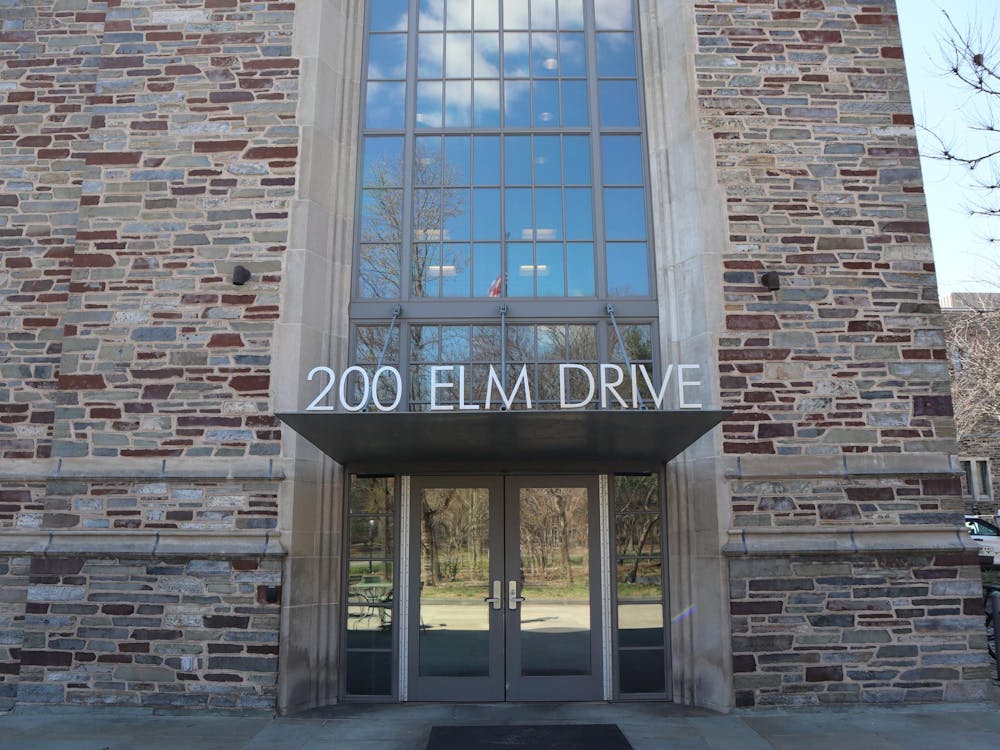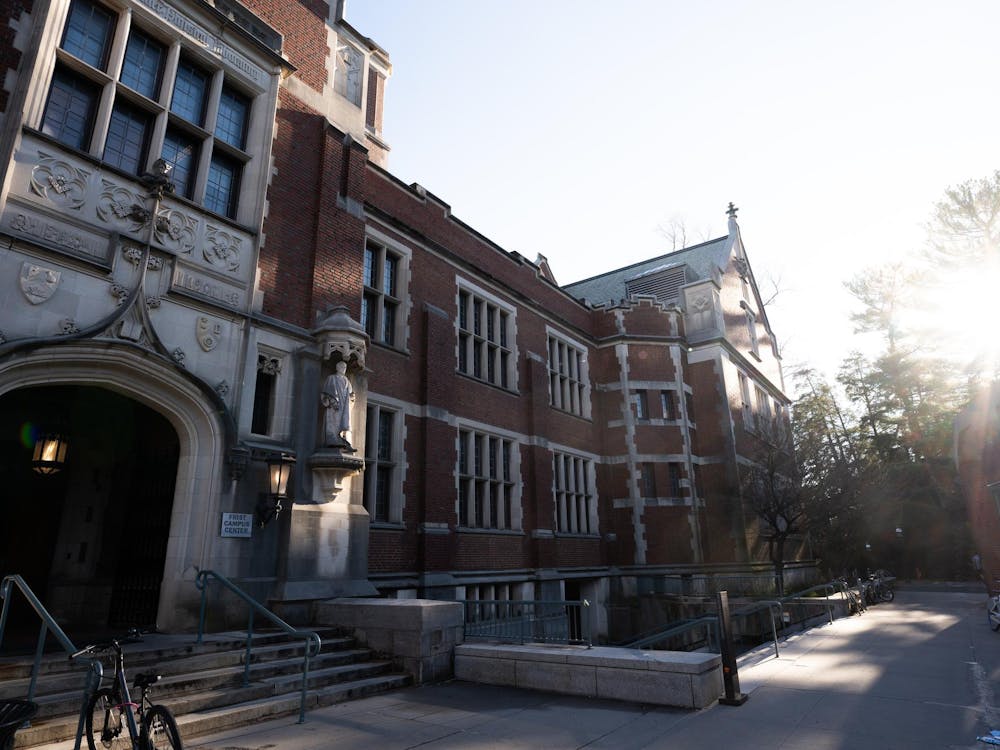The Humanities Sequence at the University has undergone many changes since last year, including doubling in size and doing away with applications.
The Council of the Humanities has also set up a team of student mentors called Humanities Mentors, social event organizers called Symposiarchs and interns called Scribes.
Kathleen Crown, executive director of the Council of the Humanities, said the Humanities Sequence of HUM 216-219 is an intensive yearlong double course taught each semester by six faculty members from the disciplines of literature, philosophy, history, music, art and classics. A double course refers to a course that counts as and takes the same number of classroom hours as two courses.
Crown said that one of the Council’s goals in eliminating the application was to make the sequence available to more students due to high student interest and positive student feedback. She explained that the course administrators received around 100 requests to reserve spots, which was triple the usual number of students who had applied to take the class in the past. This increase was due to both the waiving of applications and publicity through events like dinners with HUM alumni and faculty, Crown said.
Crown noted that the sequence included an additional precept this year, raising the enrollment limit to 60 from 45 previously. She noted that this addition was not easy because the precepts are all faculty-led and each must be structured and built into the course.
According to Crown, current enrollment in the sequence stands at 60 students compared to the 36 students last year.
“Most students who were on the waitlist, and who came to class and who were persistent, as far as I know, those students all ended up getting space in the course,” she said.
Monique Claiborne ’17, a Humanities Mentor and Symposiarch, said that applications to the sequence were counterproductive, especially for freshmen, because many students chose not to apply to the sequence due to the pressure of having to produce the "perfect application."
“A lot of students have been intimidated by the HUM sequence,” she said."You know, you come to Princeton and you’re excited that you got in this really exciting environment and all of a sudden you’re faced with this multitude of applications."
Eli Gramajo ’19, a student currently enrolled in the sequence, said an application would not have deterred him from wanting to join.
Gramajo added that he felt like 60 students was not an excessive number for the sequence.

“I feel like the lecture doesn’t really matter because it’s only 50 minutes,” he explained."But in precept, we have 12 students per precept. And I think that’s a pretty good number."
Stephen Kamola, a lecturer in history who taught the sequence in the fall of 2013, said that another change the sequence has undergone over the course of the past two yearsis the linking of lectures and precepts, ensuring that the same professor covers a particular topic in both. Before this association, the professors who lectured on a topic were often not the ones who conducted precept discussions about it, leading to extra background work required of all professors.
The Council of the Humanities has also created the new position of the Behrman Professor in the Council of the Humanities, Crown said. Esther Schor, a professor of English at the University since 1986, is the inaugural appointee. Crown said that Schor will begin a three-year term teaching in the sequence and the certificate program.
Schor said that she applied for the professorship to get more deeply involved with the Council of the Humanities.
“A chance to work more closely with the Humanities Council is just like a dream to me. I have really enjoyed my teaching there, and my work is interdisciplinary,” she said. “I enjoy the conversations that I have with colleagues there and the students of the Humanities sequence are just marvelous.”
Schor added she will only begin teaching HUM next spring, but is already enjoying being in on the inner workings of the program and having conversations to plan the second half of the sequence.
Crown said that the Council is currently accepting applications from tenured University faculty for the second Behrman professorship, scheduled to begin next year.
Crown said that the addition of the Humanities Mentors, Symposiarchs and Scribes came from an awareness that students in the Interdisciplinary Studies in the Humanities certificate program were already informally advising students about the course, and from a desire to make this advising official.
“I’ve been turning to [the certificate students] for advice about the HUM sequence, the program, the students,” she said. “So it sort of naturally evolved.”
Crown added that the positions of Humanities Mentors, Symposiarchs and Scribes were propelled by the energy created by the certificate students’ active engagement in interdisciplinary courses, interdisciplinary independent work and interdisciplinary theses.
Claiborne said that the entire setup is very informal and mostly consists of helping current Humanities Sequence students with their work. She added that she thought being a Humanities Mentor would be a good way to use the skills that she had acquired as a Writing Center fellow and also complement her academic interest in the humanities.
Claiborne explained that there are 15 Humanities mentors, most of whom are alumni of the sequence. The others are certificate students who have taken other humanities courses at the University.
“It seems clear that our first-year students would also be able to benefit from hearing about the paths they’ve taken, the choices they’ve made and how they’ve worked,” she said.
Crown explained that Symposiarchs are essentially social chairs who were in charge of things like getting food and drinks, sending out invitations and getting people together. Claiborne said that Symposiarchs looked into planning the student-led informal symposiums in addition to the workshops, which are planned by Crown and attended by professors.
“[A symposium] is like having your own personal study break that can also be used to have a second pair of eyes take a look at what you’ve already worked on,” she explained.
Crown said that Scribes are humanities interns who will work with the Council’s Communications Specialist to create web resources and information for other students, who seem to be getting all their information on the web or on social media.
Symposiarchs and Scribes will be paid on an hourly basis while Humanities Mentors will not be paid, Crown said.
Lavinia Liang ’18, a potential Scribe, said that the Humanities mentors, Symposiarchs and Scribes will be of great help to the current students.
Liang is a former opinion writer for The Daily Princetonian.
“I just really want people to get the same rewarding experience of HUM and I don’t want them to feel like if they’re struggling, then they should just drop out or something,” she said."They should know that we’re here as resources."
She added that even though she had a great experience with the sequence last year, it was not always easy.
“It was definitely painful,” she said."There were times when I felt like everyone else understood the material and I didn’t, or that everyone else was getting ahead, but overall it was very rewarding."
Crown said that while she did not know if these teams would reduce thestudent drop-off between the fall and spring semesters in the sequence, she hoped it would.
“If possible, we love to see that most students possible get the benefit of the full year experience, but we also just know that not everyone can continue,” she said.
Liang added that these positions were a great way to keep the Humanities sequence alumni connected with each other and with the Council of Humanities. She said that many of her friends from the sequence were also returning to take up one of the three positions.
“Everybody is coming back to it and giving back to the program for everything that it gave us,” she said."It’s a great community to have, no matter what your major, or your eventual department is, this part of the program still brings you all together."
According to Claiborne, the first Symposium was held on Sep. 27 at Chancellor Green Rotunda, and approximately 40 to 50 students attended the event and participated in mini writing conferences with mentors in the library section and informal chat sessions in the space outside the library.
“There were actually lines of HUM students waiting to talk with us about their ideas and to get general feedback,” Claiborne said from her perspective as a mentor at the Symposium.
Crown said in the long term, the Council is also looking to create Humanities@Princeton mentors, who will advise humanities students about issues beyond humanities classes.
“[Students] have experience and knowledge and information to share much more broadly, beyond any particular course,” she said."So we would like to think about how they might advise more broadly about courses in American Studies or Judaic Studies or Latino Studies, you know, that have a humanistic background."
Crown added that the Council may even set up a similar structure for the journalism program someday.
“I think the future for humanities at Princeton is bright,” Schor said."There are challenges and we’re trying to meet them in resourceful and new ways. But we have a lot of good minds on this."








